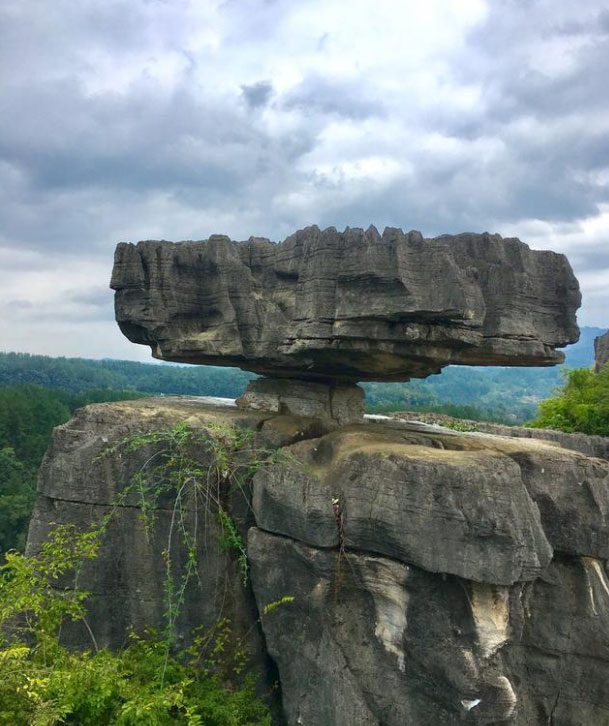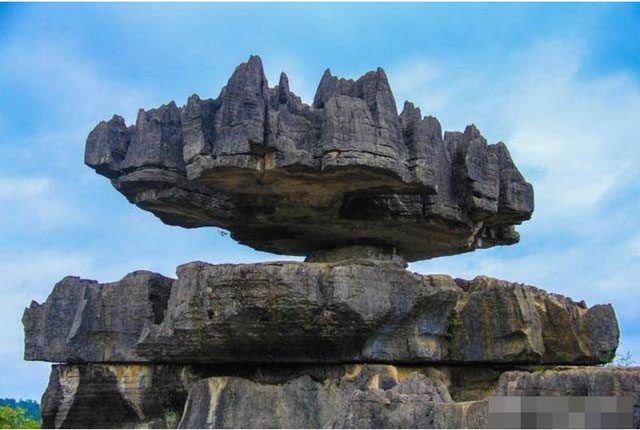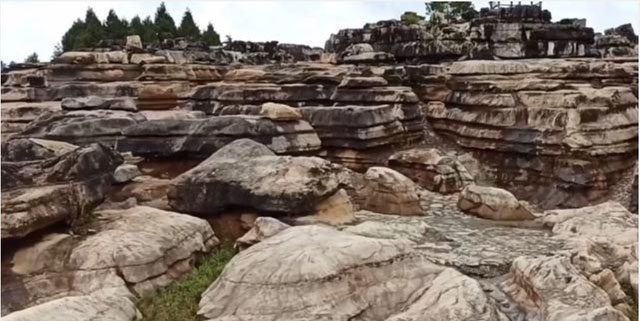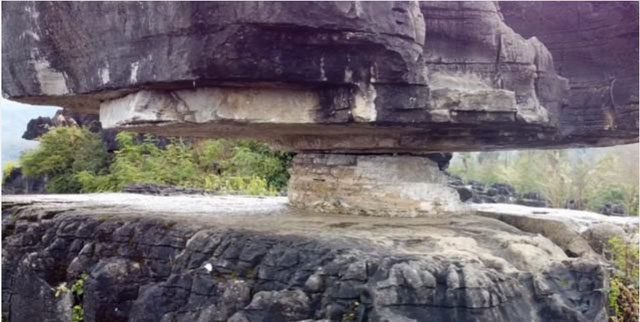How can a boulder weighing dozens of tons stand precariously on a cliff supported only by a small point of contact below?
In the natural world, many strange phenomena occur that make it hard for us to believe they are real. One such example is the rocks that can self-balance on a tiny point of support.
These balancing rocks are not limited to one location; they can be found in numerous places around the globe. For instance, there is Idol Rock in England, Mushroom Rock in the United States, Vaaniral Kal in India, Devils Marbles in Australia, the Golden Rock in Myanmar, and a boulder in Chongqing, China…
The involvement of scientists in studying the boulder in Chongqing has shed some light on this common phenomenon found worldwide.
Currently, the An Miao Stone Forest located in the Banqiao District of Chongqing, China, is home to such a peculiar rock. Consequently, it has become a popular tourist destination attracting many visitors each day.


The boulder weighing dozens of tons precariously balanced on a tiny rock in Chongqing. (Photo: Xinhuanet)
As the name suggests, An Miao Stone Forest is a place filled entirely with upright stones. At first glance, the rocks here resemble giant mountains. According to scientists, the distinctive feature of An Miao Stone Forest is its karst terrain (a phenomenon characterized by the weathering of limestone mountains due to water erosion).
The continuous movements of the lithosphere (the rigid outer layer of the Earth) caused the sea that once covered this area to recede, allowing limestone cliffs to develop. During the early history of this region, it was covered by basalt soil and sediment.
After enduring numerous historical upheavals and the external influences of nature along with unique climatic and hydrological conditions, the An Miao Stone Forest has gradually developed into the layered formation we see today.

The rocks here exhibit typical karst topography. (Photo: Xinhuanet)
The rocks here appear to be distinctly tiered. Additionally, due to the karst topography, grayish-white limestone rocks are found everywhere. Although there are many gigantic stones, only one rock can self-balance naturally. This rock has a peculiar shape with a flat bottom and surface. It measures approximately 7 meters in length, 3 meters in width, has an average thickness of about 1 meter, and weighs several tons.
The support for this boulder is actually a small rock. This rock is only about 30 cm thick, with a diameter of roughly 50 cm.
Scientists have analyzed both rocks and determined that they are both limestone. Limestone is a type of sedimentary rock primarily composed of the minerals calcite and aragonite (different crystalline forms of CaCO3). Limestone often contains high levels of impurities such as dolomite (magnesium carbonate), silica (silicon), and clay (argillaceous) in varying proportions.

This peculiar rock has attracted many tourists from both near and far to An Miao Stone Forest. (Photo: Xinhuanet)
They typically form in warm, shallow, and clear marine waters. They are a type of organic sedimentary rock that can form from the accumulation of countless shell fragments, algae, corals, and their waste. It can also be a type of chemical sedimentary rock formed by the precipitation of CaCO3 from lake or ocean water. In other words, this self-balancing rock dates back to ancient times when this area was still an ocean.
Over hundreds of millions of years, along with natural changes, the sea in An Miao Stone Forest gradually receded, turning the seabed into land. After enduring numerous storms, the stone forest as we see it today slowly took shape. However, scientists observe that geological formations like the An Miao Stone Forest are still quite rare.

















































